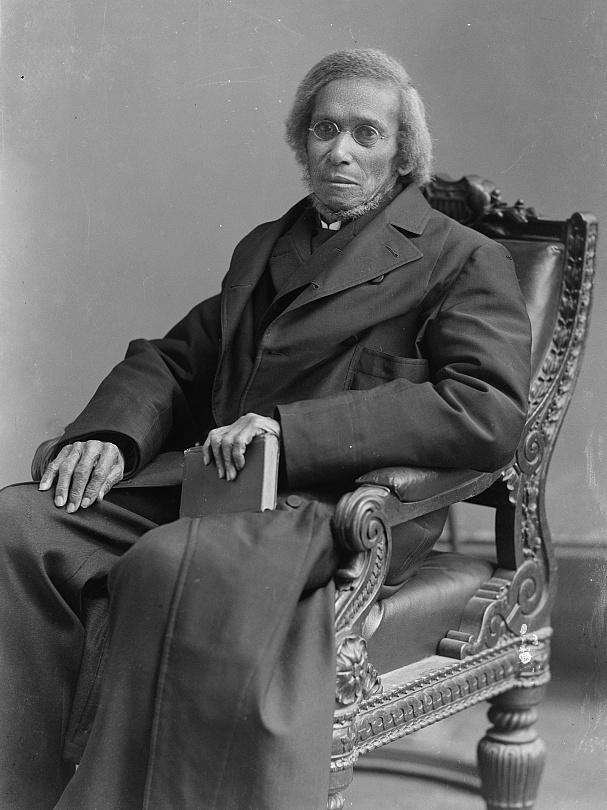|
John M. Brown
John Mifflin Brown (September 8, 1817 – March 16, 1893) was a bishop in the African Methodist Episcopal (AME) Church. He was a leader in the underground railroad. He helped open a number of churches and schools, including the Payne Institute which became Allen University in Columbia, South Carolina, and Paul Quinn College in Waco, Texas. He was also an early principal of Union Seminary which became Wilberforce University. Early life Brown was born September 8, 1817, in Odessa (then called Cantwell's Bridge), Delaware. His grandfather was a Methodist minister.Murphy, Larry G., J. Gordon Melton, and Gary L. Ward. ''Encyclopedia of African American Religions''. Vol. 721. Routledge, 2013, pp. 124–126. At the age of ten he moved to Wilmington, Delaware where he lived with William Seals, a Quaker. Even as a student, he was frustrated by segregation in education, and moved from a Presbyterian Sunday school to a Roman Catholic school to avoid the segregation. His mother was Methodis ... [...More Info...] [...Related Items...] OR: [Wikipedia] [Google] [Baidu] |
Odessa, Delaware
Odessa is a town in New Castle County, Delaware, United States. The population was 364 at the 2010 census. Founded as Cantwell's Bridge in the 18th century, the name was changed in the 19th century, after the Ukrainian port city of the same name. Today a significant part of the town is a historic district list on the National Register of Historic Places. History Odessa was originally known as Cantwell's Bridge. In 1721, a son of Captain Edmund Cantwell opened a toll bridge over the Appoquinimink Creek at this location. Cantwell's Bridge became an important port that shipped wheat, corn, tobacco, and produce down the creek to the Delaware Bay, where it traveled to distant ports. The town was also home to tanneries that produced leather goods. Cantwell's Bridge would continue to prosper as an agricultural port into the 19th century. In 1855, the grain trade collapsed after the Delaware Railroad was built to the west through Middletown. The railroad was originally proposed to be bu ... [...More Info...] [...Related Items...] OR: [Wikipedia] [Google] [Baidu] |
Wilbraham, Massachusetts
Wilbraham is a town in Hampden County, Massachusetts, United States. It is a suburb of the City of Springfield, and part of the Springfield Metropolitan Statistical Area. The population was 14,613 at the 2020 census. Part of the town comprises the census-designated place of Wilbraham. Boundaries and localities Wilbraham was originally divided between North Wilbraham and Wilbraham. North Wilbraham was home to the industrial side of the town, along with the Boston & Albany Railroad Line, which is still in use today. Wilbraham is home to the Wilbraham & Monson Academy. Wilbraham is made up of several neighborhoods, known as Wilbraham Center, North Wilbraham, East Wilbraham, Wilbraham Mountain, South Wilbraham, Boston Road Corridor and the Pines Section. In 1878, the south end of Wilbraham officially broke away from Wilbraham and formed the Town of Hampden. Origin of the name of Wilbraham The name of Wilbraham comes from the villages of Little Wilbraham and Great Wilbraham lo ... [...More Info...] [...Related Items...] OR: [Wikipedia] [Google] [Baidu] |
Daniel Payne
Daniel Alexander Payne (February 24, 1811 – November 2, 1893) was an American bishop, educator, college administrator and author. A major shaper of the African Methodist Episcopal Church (A.M.E.), Payne stressed education and preparation of ministers and introduced more order in the church, becoming its sixth bishop and serving for more than four decades (1852–1893) as well as becoming one of the founders of Wilberforce University in Ohio in 1856. In 1863 the AME Church bought the college and chose Payne to lead it; he became the first African-American president of a college in the United States and served in that position until 1877. By quickly organizing AME missionary support of freedmen in the South after the Civil War, Payne gained 250,000 new members for the AME Church during the Reconstruction era. Based first in Charleston, he and his missionaries founded AME congregations in the South down the East Coast to Florida and west to Texas. In 1891 Payne wrote the fir ... [...More Info...] [...Related Items...] OR: [Wikipedia] [Google] [Baidu] |

